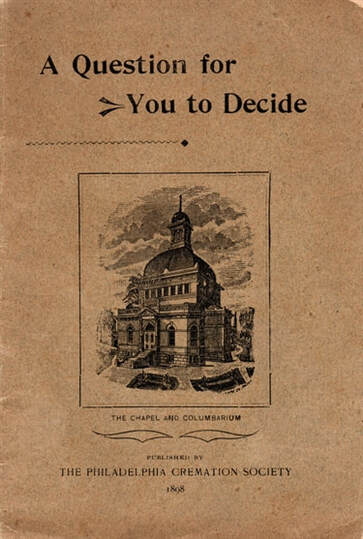|
If you like this article and would like to learn more about the history of cremation and how it relates to modern cremation, check out Cremation Then & Now, a production of Undertaking: The Podcast, wherever you listen to podcasts. Cremation Then & Now is hosted by Barbara Kemmis, Executive Director of the Cremation Association of North America (CANA), and Jason Ryan Engler, CANA Historian. Find episode 408 for more on Cremation Societies and Memorialization. To provide some sort of structure, cremation’s earliest supporters often aligned themselves in Societies and Associations – which were fueled by the reformation of burial practices. Upon payment of their dues to their society or association, members were not only supporting the building of a crematory in their community, but they were also prepaying for their own cremation. Their membership also made them part of an important social group – meetings were often like those of other social and fraternal organizations – the only difference was that cremation was their theme.  A particularly important method for early cremationists to get their message out was by publishing what has since been referred to as propaganda. Cremation societies frequently published various booklets and pamphlets which featured reasoning for choosing cremation over burial, locations of the crematories in the US, opinions of notable persons who supported the movement, and photos of the “crematory vaults” and urn selections. A cremation society in France created propaganda that included photos of bodies in various states of decomposition after burial. Many US crematories circulated this same literature, theirs showing the gruesome images along with photos of their beautiful crematories and columbaria on the facing page. Additionally, in the late 1800s, three societies published magazines for their members – The Urn (published by the U.S. Cremation Company in New York), Modern Crematist (by the Lancaster Cremation and Funeral Reform Association in Lancaster, Penn.), and The Columbarium (by the Philadelphia Cremation Society), all of which ceased publication by the end of the century. Poets and modern thinkers of the day often added their notes of support as well. For instance, the poet Arlo Bates lent his support of cremation when he wrote: Let me not linger in the tainted earth, to fester in corruption’s shroud of shame, But soar at once, as through a glorious birth clad in a spotless robe of cleansing flame. Then wrap about my frame a robe of fire and let it rise as incense censer swung; until in ether pure, it may aspire to greet the stars along the azure flung. And let me rise into a filmy cloud and touch with gold the amber sunset sky; or veiled in mist the driving storm enshroud both land and tossing main – as on I fly. Women’s suffrage supporter Frances Willard was also an ardent supporter of cremation. She stated: “I choose the luminous path of light rather than the dark slow road of the valley of the shadow of death. Holding these opinions, I have the purpose to help forward progressive movements even in my latest hours, and hence hereby decree that the earthly mantle which I shall drop ere long – shall be swiftly enfolded in flames and rendered powerless to harmfully effect the health of the living.” THE CREMATION ASSOCIATION OF NORTH AMERICAEarly on, cremationists and cemeteries who conducted cremations often struggled due to a lack of some sort of guidance and direction. There was no infrastructure or national organization to give this direction as there was in Europe where many of the crematories were operated by state and local municipalities. Dr. Hugo Erichsen, a physician in Detroit, Michigan, and founder of the cremation society there, changed that when, in early 1913, he issued an invitation to all American cremation groups to join and form a society with a national scope. He was successful in bringing 14 delegates of the 50 or so crematories in operation together under one roof and the Cremation Association of America was born. While Dr. Erichsen’s initial goal was burial reform, and for the first several years his focus was realized, the Cremation Association quickly developed into meetings of the businessmen who performed cremations in their communities – largely because the reform societies which built many of the early crematories in the country were taken over by them. The Association still thrives today and is unequivocally the source for cremation education, statistics, and information. The name was changed in 1975 to the Cremation Association of North America to reflect member involvement from crematories across the continent. CREMATION IN TRANSITIONThe modern Cremation movement in America sprang from a sanitary necessity; but over time the embalming process evolved into more common practice. This disinfection of the body, along with the advent of medicine into everyday life, the need for cremation as a means of purification after death dwindled. With sanitary concerns negated, the primary argument in favor of cremation was invalidated. New reasons to choose fire over earth needed to be enumerated, and with them, a new era in the history of cremation in America began.
Comments are closed.
|
The Cremation Logs Blog
Cremation experts share the latest news, trends, and creative advice for industry professionals. Register or log in to subscribe and stay engaged with all things cremation. Categories
All
Archives
July 2024
|
|
